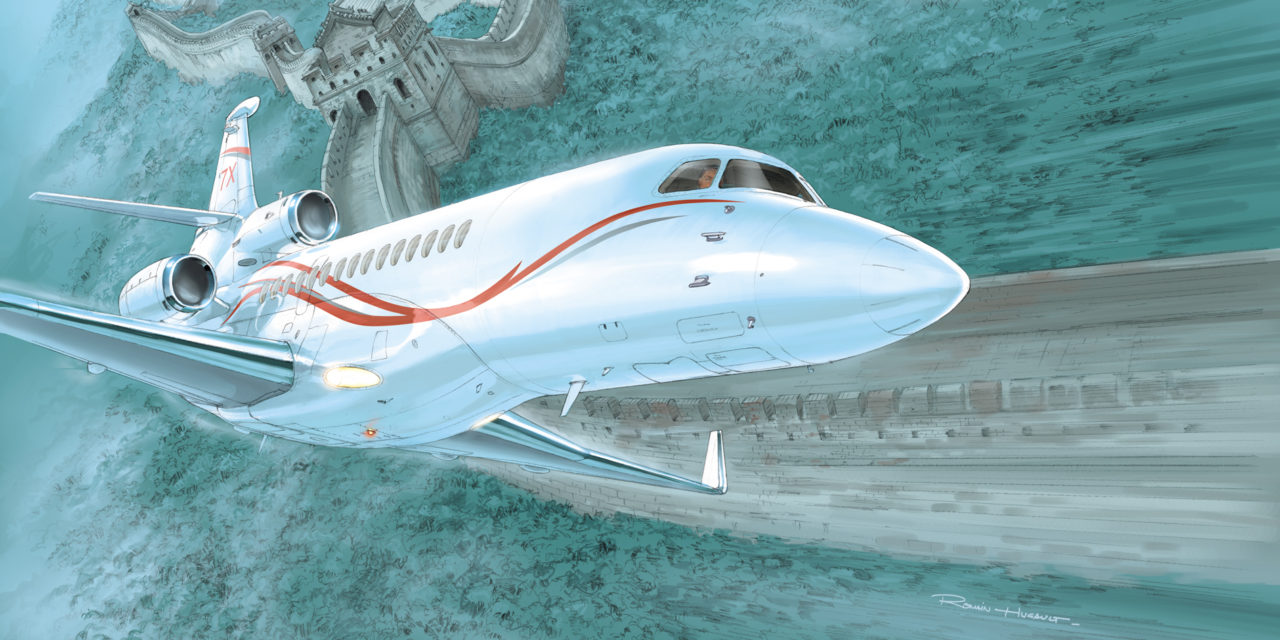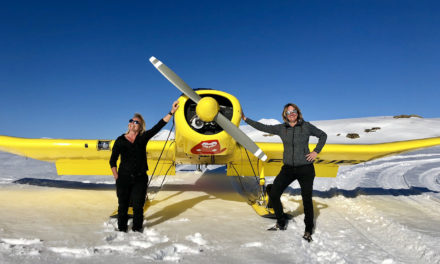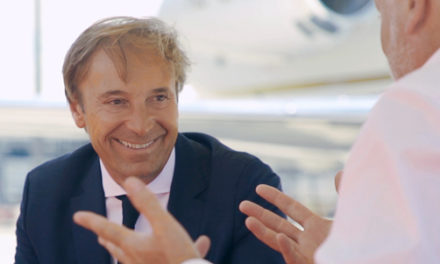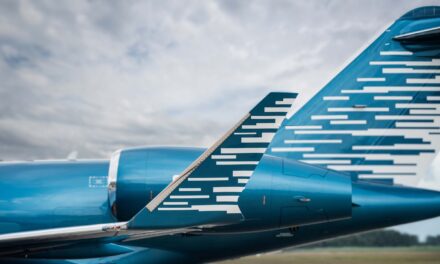The world of Romain Hugault is a blend of aeronautical subtlety, eroticism and slices of history. In less than fifteen years, this aviation lover has forged a name for himself as one of the greatest comics illustrators. More than a mere draftsman, his style has undoubtedly breathed new life into the world of aeronautical comics. Let’s meet him to find out more.
Difficult, if not impossible to mention Romain Hugault without associating him with this timeless part of the aeronautical world. A passion that led him to get his license at the age of 17, inspired, no doubt, by the career of a father, pilot in the Air Force. One rarely escapes one’s destiny. Drawer-pilot seemed, by far, the best combination for this artist who was able to succeed from his first comic, “Le Dernier Envol [The Last Flight]”, released in 2006. A comic strip released just after five years of studying industrial design and illustration at the Olivier de Serres and Estienne Institutions. And an almost instant success that he owes as much to his love of history as to his particularly rich design details. His elders were not mistaken in giving him, shortly after the publication of his book, the Michel-Edouard Leclerc prize, in Angoulême. A recognition all the more exceptional for Romain Hugault as he had not expected such a success with a large audience, as he explains: “I imagined that this book was intended only for passionate aeronautic enthusiasts. However, this prize and especially the sales success of the comic, which forced the publisher run a reprint, allowed me to enter the comic strip world “.
Drawings and the Silver Screen
Depth, details, zooming in or out: these are the main images that animate Romain Hugault’s comic strip. A preconception that detonates in this domain. Romain quickly set down his hallmark in a register long “kept” by designers such as Albert Uderzo or Jijé for “The adventures of Tanguy and Laverdure” and Victor Hubinon, then Francis Bergese for “Buck Danny“. The illustrations created by Romain Hugault have undoubtedly given a second wind to aeronautical comics that publishers, over the decades, may have left behind. And the author, who admits he has never been a fan of comics, is above all a lover of history: “I did not start with the reflexes of a cartoonist, but with those of an illustrator passionate about aeronautics“. As such, the sketches of Romain Hugault resemble more a storyboard made for a film than a work in the form of a regular composition. “When I draw a scene in a comic strip, I picture it as though it were projected on the silver screen.” From the pre-sketches made in blue pencil, then completed in precise pencil, Romain Hugault evolves his original boards with computer graphics after scanning each of them. This essential step allows the author to rework the features of his drawings and to affix the colors. And contrary to popular belief, “the computerization of the color part does not save time,” he says. “Whether you work with gouache or with a digital tablet, the time spent remains the same and it does not detract from the meticulous work of the colorization of each image.”
Renaissance of the aeronautical comic strip
Romain Hugault’s pronounced interest in the Second World War led him to develop his series “Angel Wings” in this troubled context of history. Because this period, however particular it might be, also responds to this paradox of a strong attachment to a certain lifestyle. His dramaturgy will have given some credence to aviation. But not only that. It also highlights a related style on the other side of the Atlantic. Far from the bombs, but at the heart of the conflict, emerged a fashion trend: that, in particular, of Pin-Ups which, associated with an expression of eroticism and military objects, leave nobody indifferent, even today. From this context, Romain Hugault draws images which stand out from the rest. And obviously, a story constructed by Yann, his scriptwriter. The series “Angel Wings” honors women in this conflict, especially the WASP – Women Airforce Service Pilots -, a unit composed of female pilots who were transporting planes to the front. Angela, the heroine of his series, Romain Hugault wanted to present her against the backdrop of that time. A woman with lovely curves but with strong character traits, his heroine fights as much against the enemy as against the recurring machismo and racism associated with the time. Far from playing at being a feminist, the illustrator recognizes that his “Pin-Up” imagined a decade ago is at the center of a battle that is still relevant today. “It’s a feminist cartoon and a story about a woman in a male environment where machismo prevailed at the time. But we also wanted to pay tribute to the particular work of these women pilots who were mistreated by the military staff and the US government.” For now, this flagship series, a real commercial success, restores nobility to aeronautical comics. And its creator intends to continue creating his characters and scenarios beyond the Second World War: “A commercial success is closely linked to the fact that readers are attached to the character. I drew Angela with all the human characteristics that I appreciate. So I could draw her all my life, without any problem, and I haven’t written off the idea that she evolves from one era to another.”
The Romain Hugault phenomenon
If the comic is the illustrator’s main activity, he has not forgotten other illustration projects. In spite of the year of hard work needed to create a volume of Angel Wings, he allows himself some time for other works too. Because if Romain Hugault is known for his comics, he is known just as much (if not more) for his illustrations. Known in France for his La Ferté-Alais air show poster, the Frenchman’s style is also a hit in the United States, where the organizers of the famous Chino rally gave him carte blanche to illustrate their program. In addition to these works, the draftsman is illustrator for the currency of Paris. Romain Hugault is in charge of producing two collections of coins every year on the theme of aeronautics. “A work that is off the beaten track,” he explains. This project does not prevent him, however, exploring new horizons. He thus associated himself with the production of a craft beer whose image refers to the world of aeronautics. An experience he evokes as “a bubble of air that moves me away and brings me closer to my drawings.” If this private pilot, owner of a Piper Cub, has become a phenomenon and a reference in the world of comics, illustration and aeronautics, he readily admits that he does not surrender to siren’s call of money and retains the exclusive privilege of artists to refuse certain works. However, “never due to snobbery, but more lack of time“, he says, before adding: “I’m having fun with my comic and I often stop myself from doing anything else so that I can devote the greatest part of my energy to it. “
Can you imagine a Falcon, a Gulfstream or any other business jet bearing a Romain Hugault illustration? Nothing is impossible. Especially if his heart is in it.









